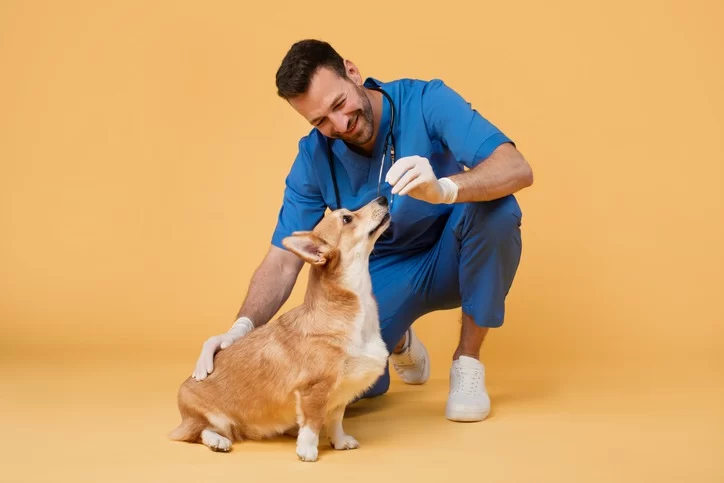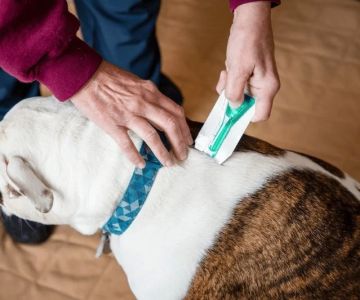Managing Your Pet's Stress During Vet Visits: Essential Tips for Pet Parents
As a pet parent, one of the most challenging aspects of caring for your furry friend is managing their stress when it’s time for a veterinary visit. Whether it’s a routine check-up or an emergency visit, the anxiety pets experience can be overwhelming—for both them and us. But, with the right knowledge and techniques, we can significantly reduce their stress and make these trips easier for everyone involved. Let me share some effective ways to manage your pet’s stress during vet visits, based on my personal experience and the advice of experts in the field.
1. Understanding the Root of Pet Anxiety
Many pets experience anxiety when they visit the vet. This anxiety can manifest in different ways, such as excessive barking, trembling, hiding, or even aggression. To address this issue, it's crucial to understand why your pet feels stressed in the first place. For some pets, the unfamiliar sounds, smells, and sights of the veterinary clinic are enough to trigger anxiety. Others might associate the vet with past negative experiences, like vaccinations or treatments that caused pain or discomfort.
When my dog, Max, first started showing signs of stress during his vet visits, I realized that his anxiety wasn’t just about being at the clinic—it was linked to his previous experience of receiving shots. Recognizing this was the first step in helping him feel more comfortable in future visits.
2. Early Socialization: A Key to Reducing Stress
One of the best ways to reduce your pet’s stress during vet visits is to start socializing them early. This applies particularly to puppies and kittens. Taking them to the vet for brief, non-invasive visits even before they need medical attention can help them become familiar with the environment. These visits should be positive and rewarding, involving treats and affection, to create a positive association with the clinic.
When I first adopted Max, I made it a point to take him to the clinic just for a quick hello to the staff. Over time, he became accustomed to the environment, and now, when we go for check-ups, he’s noticeably more relaxed, though still a bit apprehensive. The key is gradual exposure to the vet’s office with plenty of positive reinforcement.
3. Preparing Your Pet for the Visit
Preparation is essential in managing pet anxiety. A few simple steps before the vet visit can make a world of difference in your pet’s comfort level. Here’s what I recommend:
- Exercise beforehand: A good walk or play session before the visit helps release any pent-up energy and reduces nervousness.
- Familiarity with the carrier or car: If your pet is traveling by car or in a carrier, make sure they’re comfortable in these spaces. I’ve found that bringing Max’s favorite blanket or toy into his carrier makes him feel more secure during the ride.
- Stay calm: Animals are very attuned to our emotions. If you’re feeling anxious about the vet visit, your pet may pick up on this and feel more stressed. Keeping a calm demeanor helps reassure them.
Remember, the more relaxed you are, the more your pet will mirror that behavior.
4. Use Calming Aids and Techniques
For some pets, additional calming aids can be beneficial during a vet visit. There are various products on the market designed to help reduce pet anxiety, from calming collars and sprays to oral supplements. I’ve had success with calming pheromone sprays like Adaptil, which mimic the calming scents that mother dogs naturally produce. These sprays can create a calming environment during the ride to the vet and even in the examination room.
Some pet owners also use natural remedies, such as lavender oil or chamomile tea, though it’s always a good idea to consult your vet before trying new treatments. If your pet’s anxiety is severe, your veterinarian may recommend a prescription medication to help keep them calm during visits.
5. Choose a Vet Who Understands Animal Anxiety
Finding a veterinarian who understands and is sensitive to your pet’s anxiety is incredibly important. If you notice that your pet is constantly stressed out during visits, consider looking for a vet who specializes in behavior or has experience working with anxious animals. I’ve found that Max responds much better when his vet is gentle and takes extra time to calm him down during exams.
Many clinics even offer “fear-free” services, which are designed to reduce anxiety in pets. These services may include techniques like low-stress handling, providing treats during exams, and allowing more time for the pet to adjust to the environment. Fear-free practices have been life-changing for Max and me!
6. Making the Visit as Quick and Efficient as Possible
One of the most stressful parts of a vet visit is the waiting room. The sights and sounds can overwhelm a nervous pet. To minimize stress, I always try to schedule appointments during quieter times of the day, such as early mornings or weekdays, when the clinic is less crowded. If possible, ask the clinic staff if they offer express visits or shorter appointment times.
Additionally, having a vet who is familiar with your pet’s needs and who can perform the examination as quickly as possible will reduce the amount of time your pet spends in an anxious state. For Max, I try to keep the visit as brief as possible, so he doesn’t have time to get too worked up.
7. Post-Visit Relaxation
After the vet visit, make sure to give your pet plenty of time to relax and decompress. I always offer Max a special treat and spend some quality time with him, whether it’s a game of fetch or simply sitting together in a quiet space. This helps him associate vet visits with positive experiences, making it easier to manage his anxiety next time.
It’s also important to monitor your pet after a visit. Some pets may experience delayed stress or anxiety that can manifest later on. Keeping an eye on their behavior can help you address any issues promptly.
Managing your pet’s stress during vet visits doesn’t have to be a daunting task. With a little preparation, patience, and the right strategies, you can help your furry friend feel safe and secure at the vet. If you’re unsure about how to help your pet during their next visit, I recommend visiting a clinic like Hidden Brook Veterinary, where they offer a variety of services and tailored approaches to pet care.












